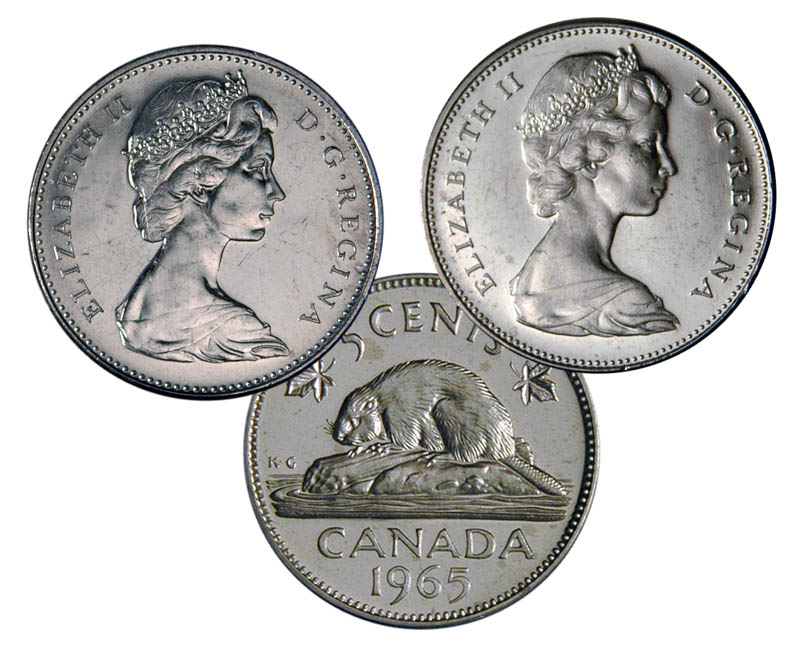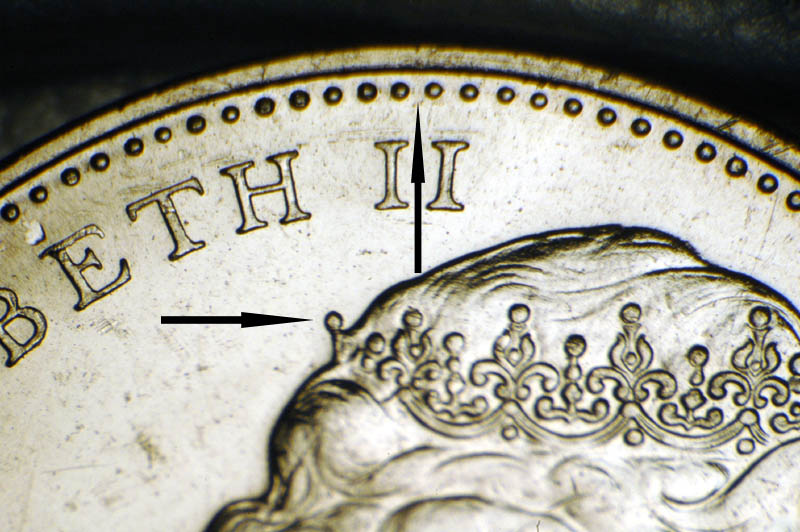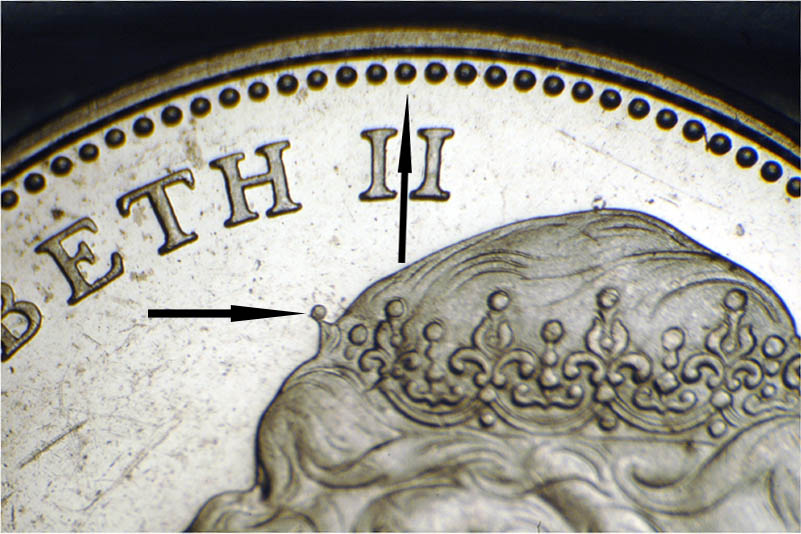|
|
Canada 1965 Large Beads 5c Revisited
By Ken Potter - NLG
October 2007
© Ken Potter 2007

Jerry Kennison of Vancouver, Washington discovered the 1965 Large Beads five cent piece in 1996 it and its existence was detailed by me in Canadian Coin News more than a decade ago where it was dubbed the Large Beads/Detached Jewel variety. In that article I noted the many differences between the Small and Large Beads varieties and revealed the fact the Kennison had found a dozen examples in a roll of proof-like 1965 five-cent pieces that he obtained from a roll that he was certain contained a proof-like coins taken from PL sets. I noted that he had sent two stages of the coin for me to examine, one with a nice proof-like cameo effect on both obverse and reverse and another with the same obverse sans the cameo effect with a more uniformly brilliant finish to the obverse. A tiny obverse die crack shared by both coins linked them together as being from the same obverse die.

Here is a look at the common Small Beads variety
Now, after more than a decade, Kennison has revealed even more of the story that he has kept hidden all these years! Two of the dozen coins he found in that roll were of an earlier die stage with the jewel to the rear of the tiara weaker than on the Small Beads variety but nonetheless fully attached. In effect, anybody searching for this rarity that has restricted his or her examination to the rear jewel, considering the detachment as a positive indicator of the variety, may have missed finding it completely. It also means the popular term; Large Beads/Detached jewel is now invalid since the term “detached jewel” is only a diagnostic to the later, perhaps less-desirable, stages of the same variety.

Here is a look at the rare Large Beads variety in the early die state
with a barely attached rear jewel
While my earlier articles on these varieties went into great detail on all the differences in the bead to lettering alignment on each of the varieties, it is suffice to note that the entire legend-to-bead orientation about the rim is different on each variety. Perhaps the easiest place to discern this is on the Roman numeral II of Elizabeth II. An arrow placed vertically between the “II” of ELIZABETH II pointing toward the rim on the common Small Beads variety will easily pass between two beads. The horizontal arrow in our image points to the strongly attached rear jewel on the Queen's tiara. On the rare Large Beads variety the same arrow will bump right into a bead that is fairly well centered between the II. The horizontal arrow points to the rear jewel in the Queen's tiara that on this stage is more weakly attached than on the Small Beads variety; it is completely detached on later stages of the Large Beads variety.
There are also significant differences in the detail of the lower portrait and for those up to the tedious task of counting you will find the Small Beads variety bears 119 beads located in a bit closer to the portrait vs. 138 beads located closer to the rim on the Large Beads variety.
The last auction results that I am aware of for this variety was for two pieces in the later die stage trading at the July 2006 Canadian Numismatic Association Convention Auction were an ICCS-MS63 sold for $1,400.00 and an ICCS-MS64 sold for $2,600.00 The 2008 62nd Edition of A Charlton Standard Catalog Canadian Coins values the same variety in MS60 $1,000.00, MS63 $2,000.00, MS64 $3,000.00. A second look at your collection might be in order!
For more information on this item click below:
Send email to: KPotter256@aol.com

Numismatist Since 1959 ~ Serving
the Collector Since 1973
CONECA's Longest Serving Doubled Die Attributer
Member of: ANA-LM CONECA-LM NLG NCADD-FM
MSNS-LM
NWDCC RCC WBCC BBCC IASAC